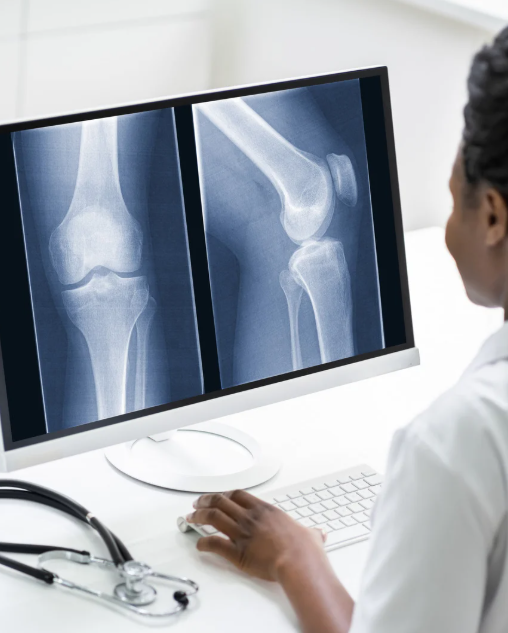One of the most common questions we get as physiotherapists is “Do I need a scan?”. There’s a range of radiology equipment available, and sometimes we may rely on them to confirm or eliminate a particular diagnosis. This may be the case when clinical assessment alone is unable to differentially diagnose a condition. We also rely on scans when we need to know the severity of an injury. However, imaging is not recommended routinely.
There are many different types of imaging and they are used in different situations or different body parts.
Below I will discuss the different imaging options that we may refer for. In each individual case we make a judgment on what we think will help you achieve the best outcome. We’ll balance the benefits verse the risks and determine whether sending for a scan if necessary in your individual situation.
The main types of diagnostic scans to image musculoskeletal problems are:
- X-ray scans
- Computed (or computerized) axial tomography (CT or CAT) scans
- Diagnostic ultrasound scans
- Magnetic resonance imaging (MRI) scans
- Bone scans
Each of these scans use different methods to achieve a picture of structures beneath the skin.
1. X-ray
An X-ray uses a small amount of electromagnetic radiation to take a quick picture of the inside of your body. As bone absorbs more X-rays, a white area presents where bone is present and the darker areas are where more x-rays have passed through (Muscles, tendons, fat) .Dense structures like bones show up clearly, however softer tissues are harder to see.
Xrays are fast, cheap and great for skeletal structures. They however are not detailed for soft tissues and do incur small radiation exposure.
2. CT Scan
CT scans also use electromagnetic rays which are directed at the body segment from many angles. These series of X-rays are then combined by a computer to create a 3D image. As X-rays are used as the medium for obtaining an image, CT scans are ideal at looking at bone very accurately and can also show soft tissue moderately well. One of the major negatives to CT scans is the amount of radiation needed to create this type of image. They are also more expensive.
3. MRI
MRIs use strong magnets and radio waves (no radiation) to produce very detailed images, especially of soft tissues. MRI scans are typically best in showing tissues with high proportions of water. These include muscle, tendon, ligament, fat, swelling. The sensitivity of MRI also gives it a very good ability to show bone. MRI’s are also great in that they don’t require the use of radiation, however they are time consuming and expensive to perform.
4. Ultrasound
Ultrasound uses sound waves to create live images of what’s happening inside your body. Ultrasounds are quite good as showing soft tissue under the skin such as muscle and tendon. Where they differ from other scans is that they are dynamic. Images can be recorded as a body segment is moved. The equipment they require is much cheaper than other scans and they are fairly easy to complete. However the downside to ultrasounds scans are images are less accurate. They are very user dependent and may only show a part of the problem.
5. Bone Scan
A small amount of radioactive material is injected into your body, which collects in areas of high bone activity. During times of damage, the body increases blood flow to an area to provide nutrients for this repair to occur. Inflammation is part of this process. This radioactive material moves with normal blood and increases in areas of bone repair and remodeling. A special camera detects the radiation to highlight “hot spots.”
Should You Get a Scan “Just in Case”?
Short answer: No, not without a good reason.
Medical imaging is an amazing tool, but it’s not something you want to do routinely unless it’s medically necessary. While the risk of radiation exposure is low, repeated exposure (especially from CT scans or bone scans) adds up. Imaging can sometimes pick up harmless things that lead to anxiety, unnecessary tests, or even surgery. Scans can be expensive and may not tell you anything that we can’t already assess with clinical judgement.
When scans are necessary, your doctor or physiotherapist will choose the right one based on what they suspect is going on. This will help support their clinical assessment findings.
- Sheree

